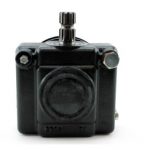It’s one thing to have your lawn looking good; it is another thing to have your lawn looking great. The difference between the two is paying attention to details. For example, a lot of lawn care enthusiasts are interested in achieving order in the visual appearance of their lawn. This can include separating lawn from garden, drive and pathways, and possibly large obstacles nature puts on your lawn like boulders and trees.
Separating the lawn from other elements of your property may be a concept that a lot of gardeners ignore. However, it helps tremendously in giving your lawn and property a polished or finished look.
When my family gathered to work on our lawn on Saturdays during the spring, my job was to cut a small trench or edge between the lawn and the driveway, the curb, and the garden. I used a power edger, a shovel, or a spade. This created the desired results. However, I had to edge every weekend.
Other methods of edging include using materials to create a barrier between the lawn and other things on your property. The materials can be natural or man made.
The natural method includes using stones, mulch, wood or timber edging. All work and your lawn looks good, but there are some disadvantages. Wood can rot; timber edges are pressure-treated lumber and the manner that they are made can cause problems for vegetation; stones can be expensive if you are not lucky enough to have a free-access to them; and mulch can serve the purpose, but you have to put some work into it by stripping grass from the outer edges of beds, borders and walkways and then filling in with the mulch.
The other alternative is to use materials that are manufactured. This includes metal, plastic, concrete, and bricks.
Which you use is based on subjective reasons. For example, many people would not use plastic because they say it looks too cheap. However, plastic is inexpensive and is a popular way to solve the issue. One can use concrete, but it can be too heavy for some people to work with. Bricks are lighter and many who use them say that they are well suited to offer a traditional looking landscape design.
Metal edgings are made of aluminum or steel. Each is malleable and can be configured in curves or straight lines and they are sturdy, so they last. However, the result may not appear natural to you and over time they can rust.
Plastic edgings use all kinds of plastics including vinyl. They are widely used and some come in fencing styles. They do the job offering a crisp, clean appearance. However, they can crack in cold climates over time.
Bricks serve the purpose well because they come in many styles and can be used to create patterns. Moreover, brick is strong so it provides an edging solution that is more permanent. Still, you have to be certain that the bricks are sunk deep enough into the ground so that your lawn mower can pass over them without being damaged.
Finally, if you want to make a personal statement, then you might prefer a quirky look and use such things as roofing tiles and dishes.







